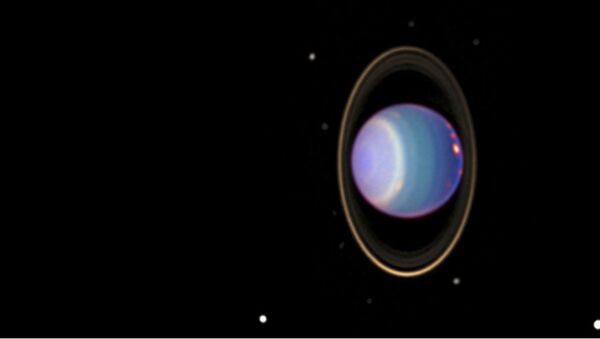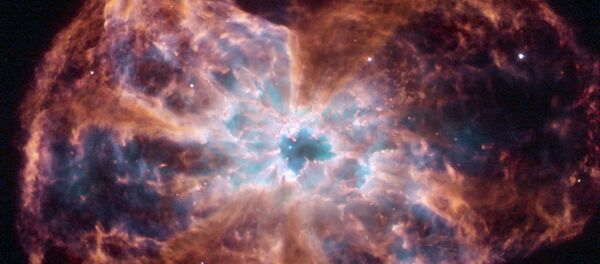Planetary scientists from the University of Idaho's Moscow campus, Rob Chancia and Matthew Hedman, re-examined data obtained by the Voyager 2 spacecraft in 1986, and found that the Alpha and Beta rings of Uranus display previously unnoticed wave patterns. The researchers suggest that the otherwise symmetrical inner rings of dust and rocks surrounding the planet are perturbed by two moonlets.
"These patterns may be wakes from small moonlets orbiting exterior to these rings," the researchers write in a report on arXiv.org.
"These moons are pretty tiny," Chancia told New Scientist, and are thought to primarily consist of dark surface material that reflects only a very small amount of visible light, explaining why they were not detected by the Voyager 2 spacecraft. The moons, if their existence is confirmed, are thought to measure between 2-9 miles in diameter.
Uranus is the third largest planet in the Solar System, and has 13 distinct rings and 27 moons. The possible newly discovered moons are in an orbit closer than any other of the planet's rocky satellites. The planet, almost 20 times further from the Sun than the Earth, has not been as closely studied as its neighbors. Uranus has had one passing spacecraft, Voyager 2, and is yet to receive an orbital planetary research platform.


